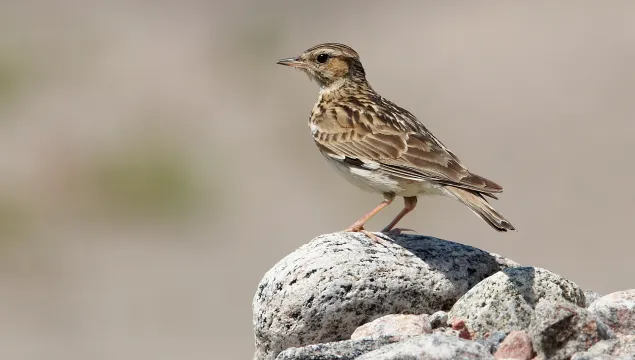
Woodlark
The secretive woodlark can be hard to spot. It nests on the ground on our southern heathlands and uses scattered trees and woodland edges for lookout posts.

The secretive woodlark can be hard to spot. It nests on the ground on our southern heathlands and uses scattered trees and woodland edges for lookout posts.
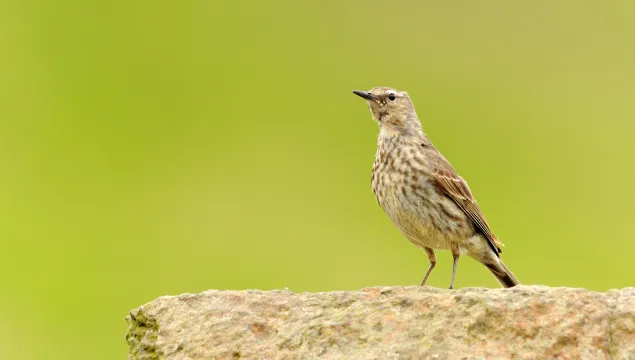
A common and stocky bird of our rocky coasts, the rock pipit can nearly always be seen close to the sea. It is a bit smaller than a starling.
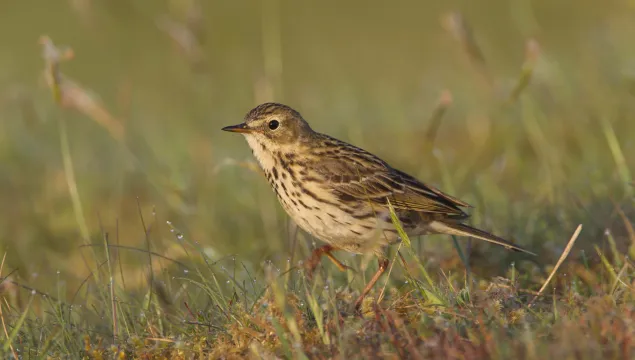
The meadow pipit favours moorland and grassland. It is an unfortunate victim of cuckolding behaviour - their own young being pushed out of the nest, so they can look after the 'parasitic' Cuckoo chick.
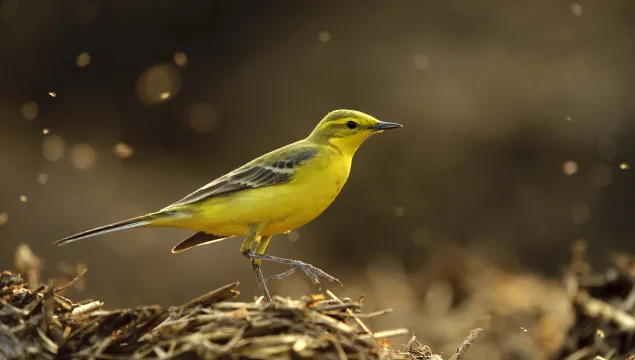
The yellow wagtail can be spotted running about, chasing insects on lowland damp marshes and meadows during summer. As its name suggests, it does wag its tail!
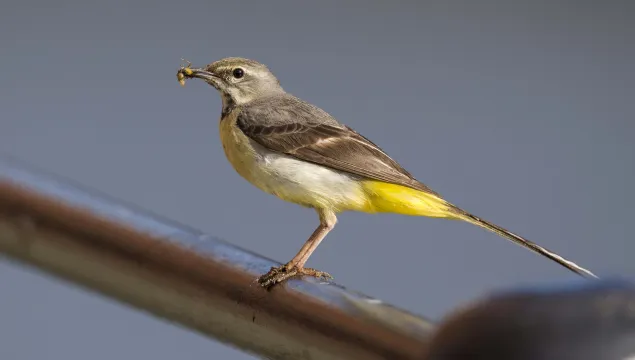
A breeding bird of fast-flowing, upland rivers, the grey wagtail can also be seen in lowland areas, farmyards and even towns in winter.
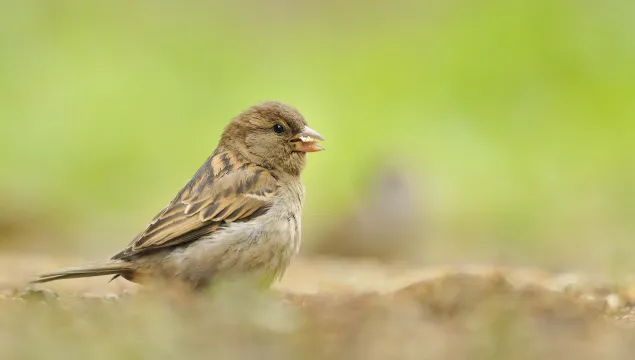
The house sparrow is a familiar, streaky brown bird of towns, parks and gardens. Males sport a grey cap and black bib, the size of which indicates their status.
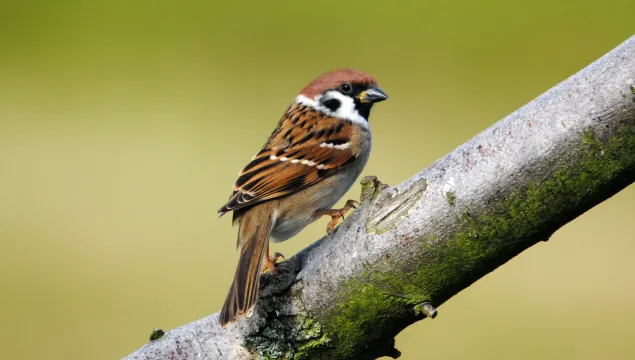
A scarce and declining bird, the tree sparrow can be spotted on farmland and in woodlands; it is not an urban bird in the UK. It has a brown cap and black cheek-spots, unlike the similar house sparrow.
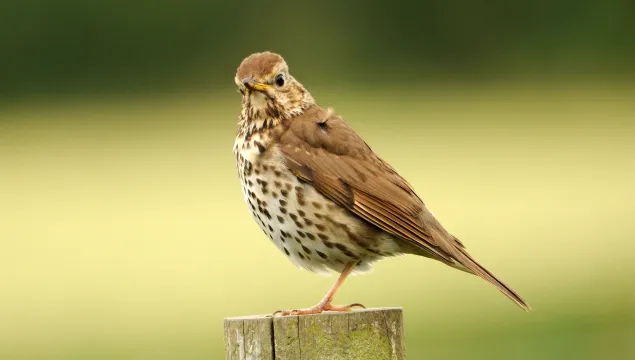
The song thrush is a familiar garden visitor that has a beautiful and loud song. The broken shells of their blue, spotty eggs can often be found under a hedge in spring.
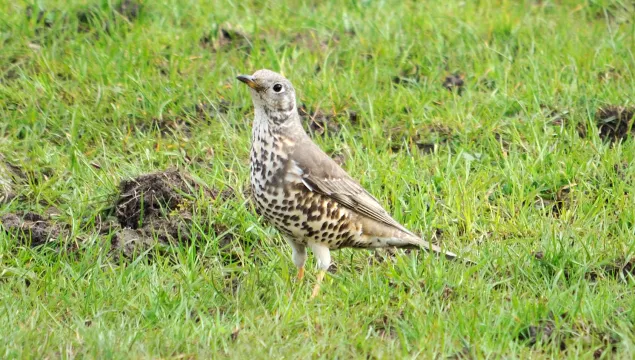
The mistle thrush likely got its name from its love of mistletoe - it will defend a berry-laden tree with extreme ferocity! It is larger and paler than the similar song thrush, standing upright and bold.

The redwing is a winter visitor, enjoying the feast of seasonal berries the UK's hedgerows, gardens and parks have to offer. Look out for the distinctive orangey-red patches under its wings.
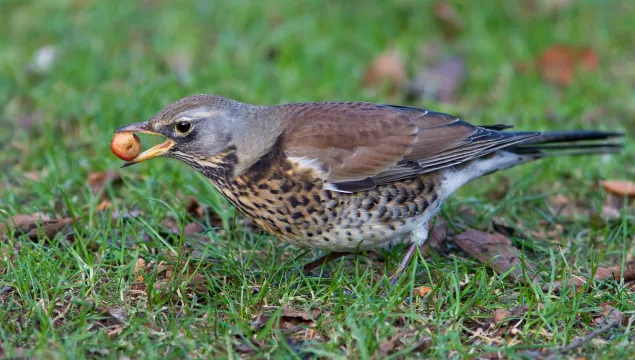
Often spotted in large flocks, the fieldfare is an attractive thrush. It is a winter visitor, enjoying the feast of seasonal berries the UK's hedgerows, woodlands and parks have to offer.
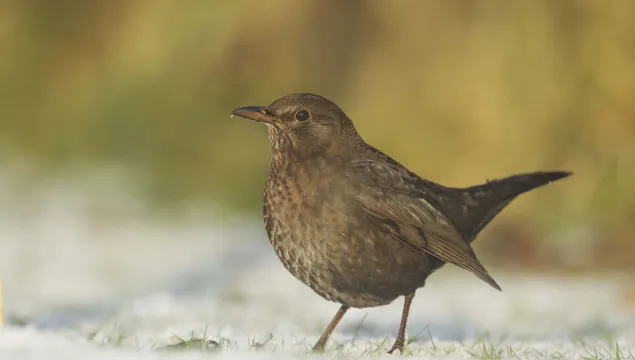
A much-loved garden bird, the blackbird is famous for its harmonious song. In winter, our resident birds are joined by migrants from Scandinavia and the Baltics.